Brugmansia Diseases: Fixing Common Issues With Brugmansia
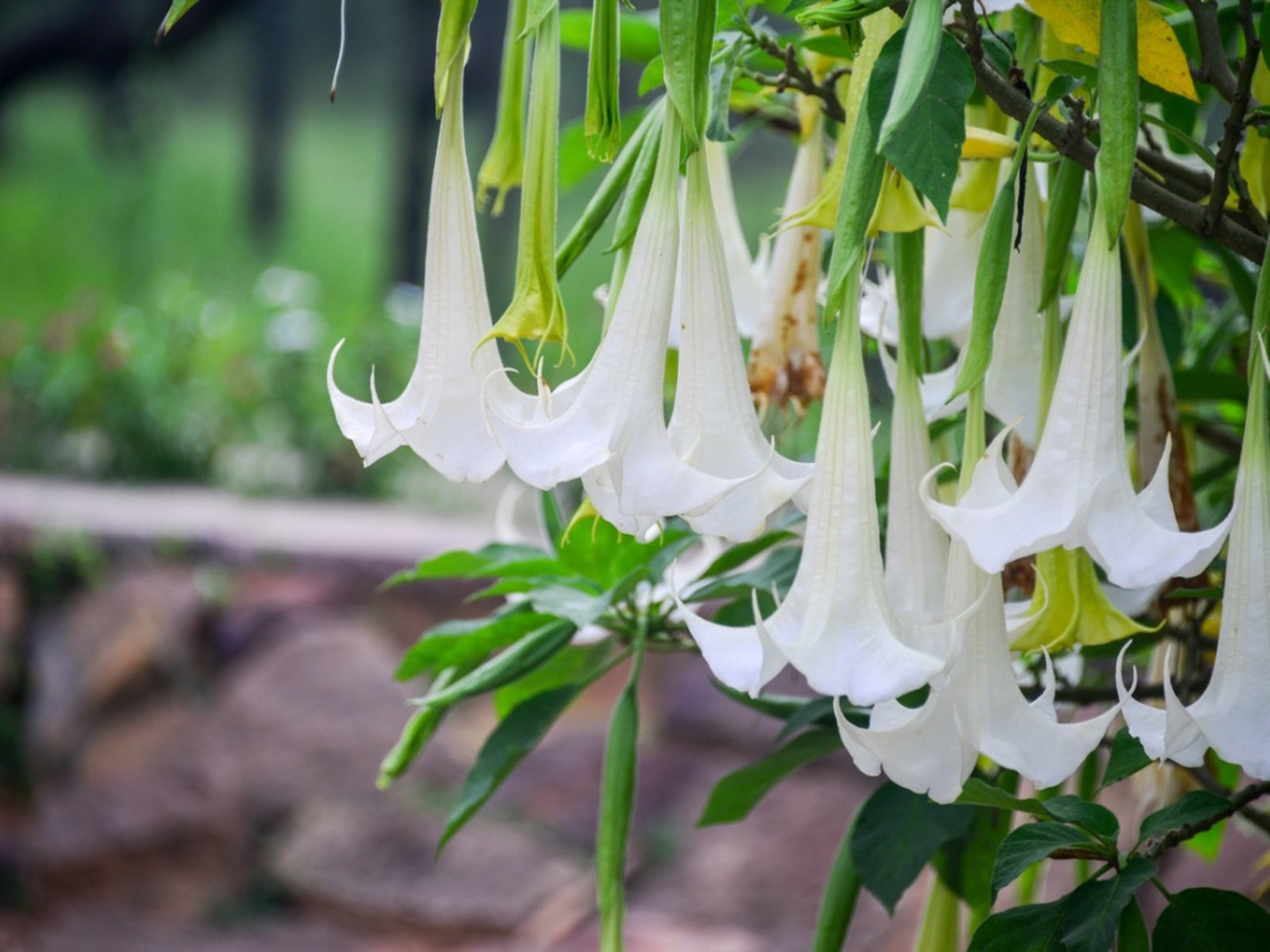

The classic, trumpet-shaped flowers of brugmansia make it a favorite of gardeners everywhere, but brugmansia diseases can stop this plant's display short. Because brugmansia is a close relative of tomatoes, issues with brugmansia are similar to those of its popular cousin. Treating sick brugmansia plants starts with the correct identification of the pathogen involved.
Disease Problems of Brugmansia
Understanding the pathogen is the best way to get started with diseased brugmansia care. Although this list is far from exhaustive, being able to recognize these common brugmansia diseases will help you make the right care decisions for your plant: Bacterial Leaf Spot - Caused by the bacteria Xanthomonas campestris pv. hederae, bacterial leaf spot is encouraged by high humidity. It appears as a series of small, brown spots surrounded by a yellow halo and can spread rapidly. When it appears, thin your plants to increase air circulation, clean up any fallen plant debris and remove all affected leaves to slow or stop the infection. Downy Mildew - This common fungal disease is caused by a number of fungal pathogens, but it always appears similarly. When you notice irregular yellow spots on the tops of your plant's leaves and a webby or cottony growth on the underside, you've got downy mildew. You can treat it easily with neem oil, applied to both sides of the leaves at 7- to 14-day intervals for several weeks. Powdery Mildew - Powdery mildew is very similar to downy mildew and is treated in the same way. Instead of the fungal mass being on the underside of the leaf though, a powdery, mealy substance appears on the top of the leaf. Both diseases can be deadly if left untreated and plants may benefit from a reduction in the humidity level. Root Rot - Common soil fungi, like Pythium, are responsible for destroying the roots of brugmansia when the soil has remained waterlogged for an extended period. Sick plants will wilt readily and may appear less vigorous, but you won't know for certain you've got root rot unless you dig your plant up and check the roots. Black, brown, or soft roots, or those whose sheaths slide off readily, are already dead or dying. You can sometimes save these plants by repotting them in dry soil with excellent drainage and watering them well. Never leave a plant in standing water, as this only encourages root rot. Verticillium Wilt - A devastating and all-too-common problem, verticillium wilt is the result of a pathogenic fungus that enters the affected brugmansia's transport tissues through the root system and rapidly multiplies. Plants typically will die in sections, with yellow leaves appearing all along one stem early in the disease. As it spreads, more of the plant wilts and drops. There is no cure for verticillium wilt, but planting future brugmansia in sterile soil can help to prevent it from taking hold. Viruses - Tobacco mosaic and tomato spotted wilt viruses are the most common viruses among brugmansia. Tobacco mosaic causes a distinctive mosaic pattern of yellow and green areas on the leaf, along with deformed fruits and flowers. Tomato spotted wilt stunts plant growth and causes brown to black streaking on stems, as well as leaf deformity and yellow veins. Unfortunately, viruses are for life in plants. All you can do is destroy the infected brugmansia to prevent from spreading the disease to nearby plants.
Gardening tips, videos, info and more delivered right to your inbox!
Sign up for the Gardening Know How newsletter today and receive a free copy of our e-book "How to Grow Delicious Tomatoes".

Kristi Waterworth was a regular contributor to Gardening Know How for many years, answering countless queries on plant pests and diseases.
-
 Get Ready For A Summer Of Hummers! Grow These Full Sun Hummingbird Plants and Flowers
Get Ready For A Summer Of Hummers! Grow These Full Sun Hummingbird Plants and FlowersIf you’re lucky enough to enjoy a sunny backyard, make sure you are maxing out on your pollinator opportunities and grow these full sun hummingbird plants and flowers
By Tonya Barnett
-
 12 Lush Alternatives To A Lawn For Sustainable Spaces
12 Lush Alternatives To A Lawn For Sustainable SpacesAlternatives to a lawn are beautiful and also beneficial to your local ecosystem and its pollinators. Explore our top picks for plants to replace grass.
By Tonya Barnett
-
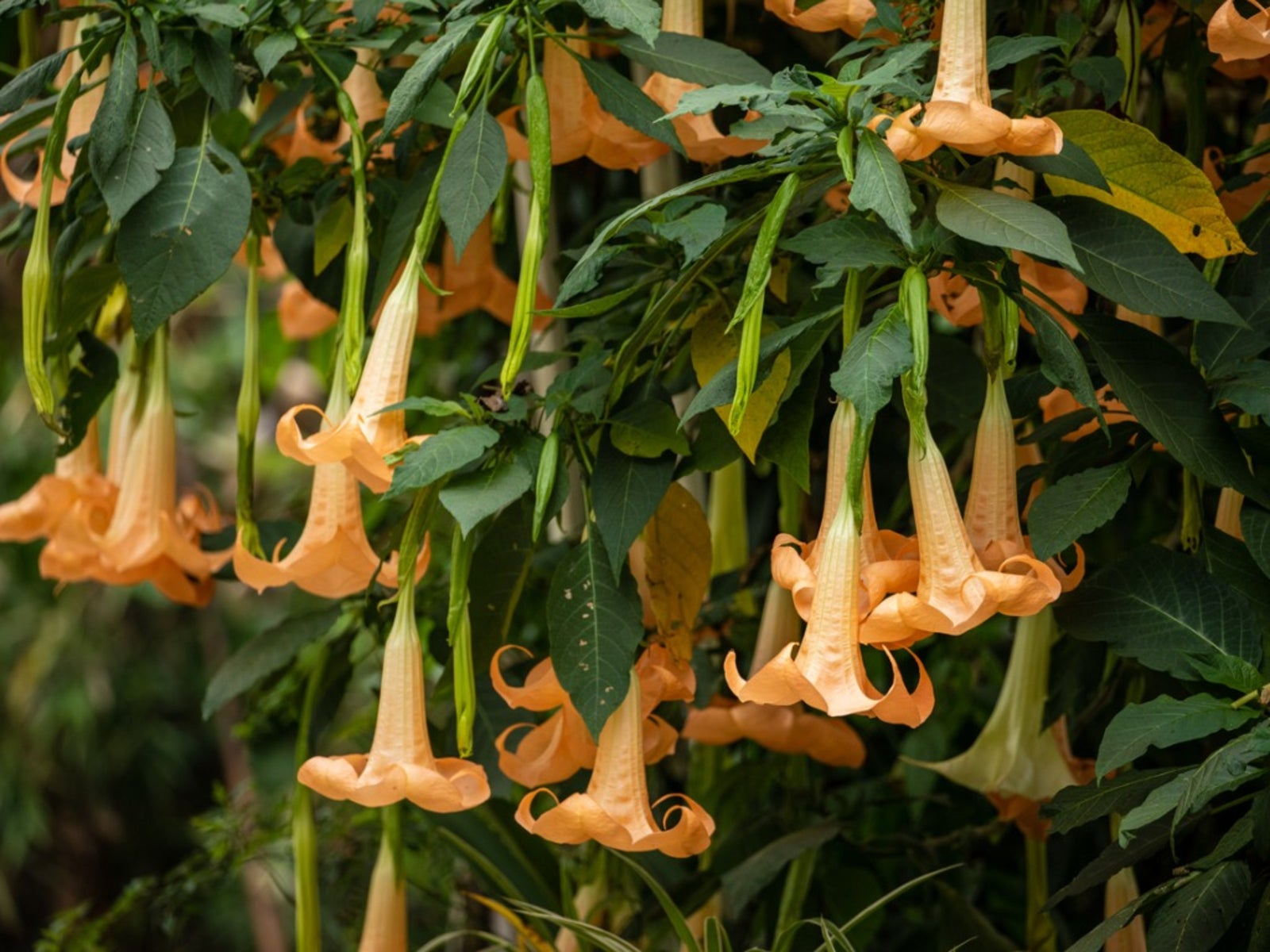 Brugmansia Cold Tolerance: How Cold Can Brugmansias Get
Brugmansia Cold Tolerance: How Cold Can Brugmansias GetHow cold can Brugmansias get and still survive? The United States Department of Agriculture sets Brugmansia cold hardiness in zones 8 to 11. Learn more about the cold tolerance of Brugmansia plants in this article.
By Bonnie L. Grant
-
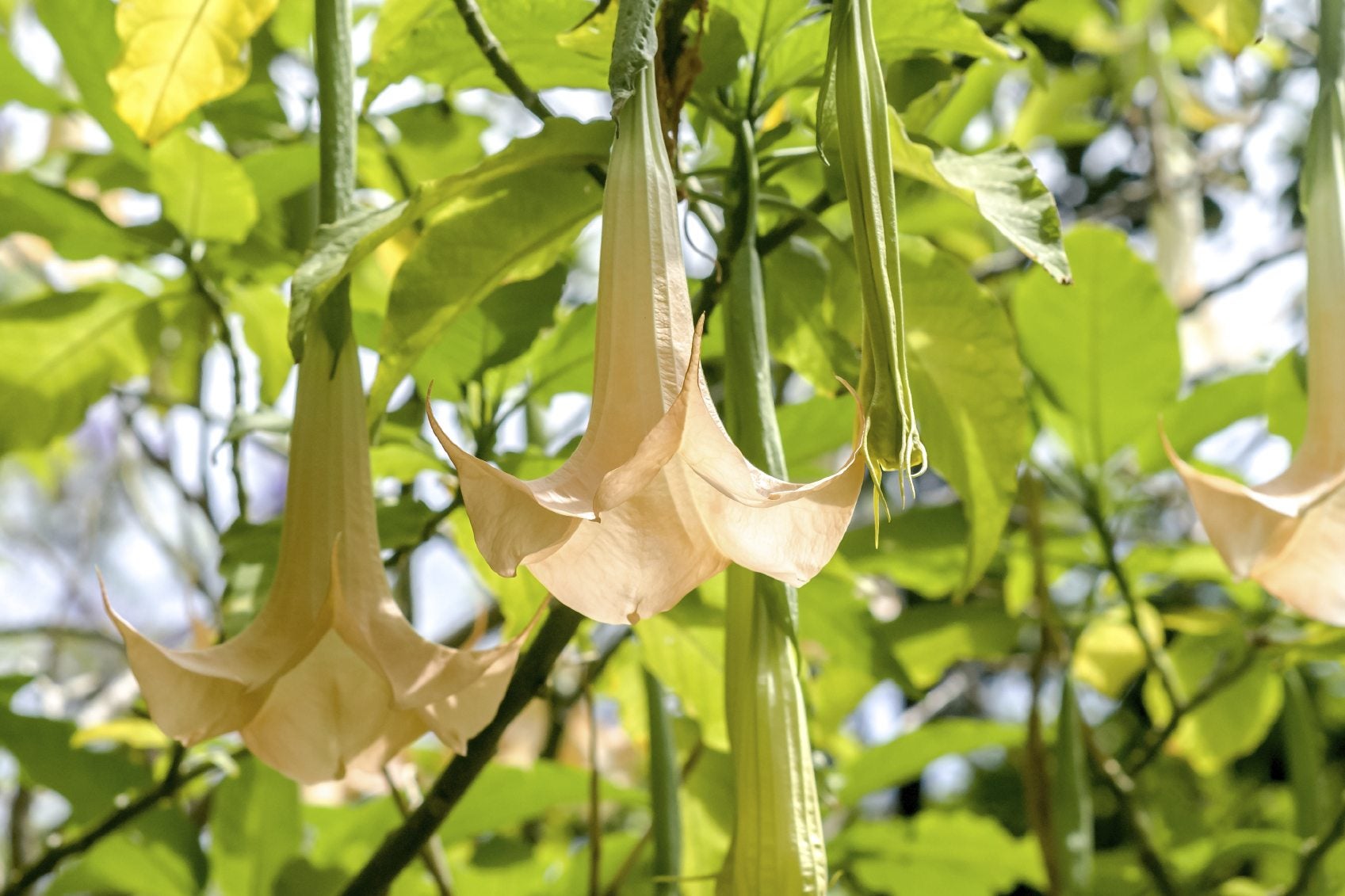 Brugmansia Plant Care: How To Care For Brugmansia In Ground Outside
Brugmansia Plant Care: How To Care For Brugmansia In Ground OutsideGrowing brugmansia in the ground works well in United States Department of Agriculture zones 9 to 12. Try a brugmansia in the garden for show-stopping color and dynamic proportions. This article will help get you started.
By Bonnie L. Grant
-
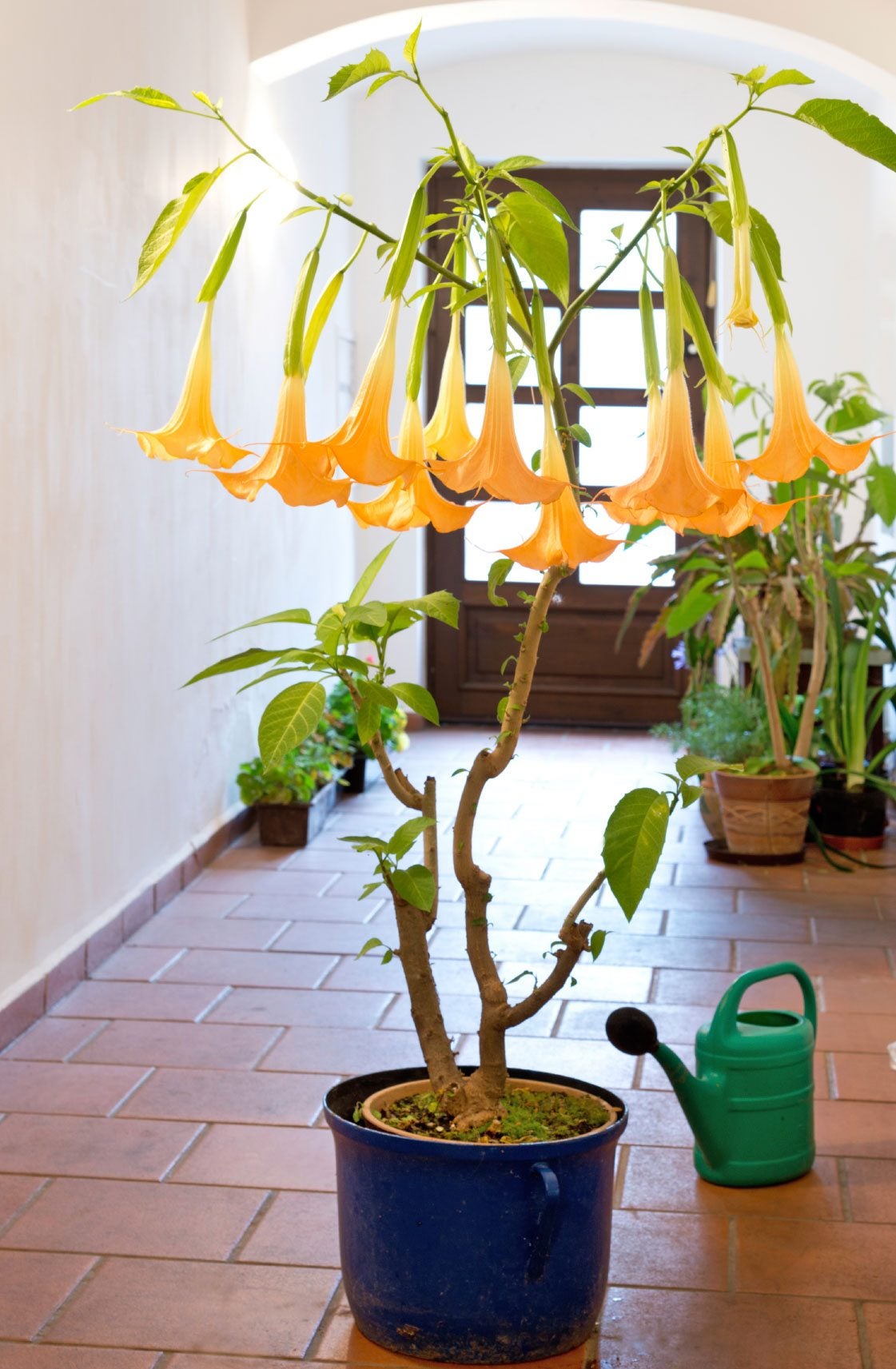 Watering Brugmansia Plants: How Much Water Does Brugmansia Need
Watering Brugmansia Plants: How Much Water Does Brugmansia NeedBrugmansia is a distinctive plant with big leaves and huge, drooping, trumpet-shaped blooms as long as your foot. This flashy tropical plant is surprisingly easy to grow, but it helps to know exactly how to water brugmansias. Click here for more.
By Mary H. Dyer
-
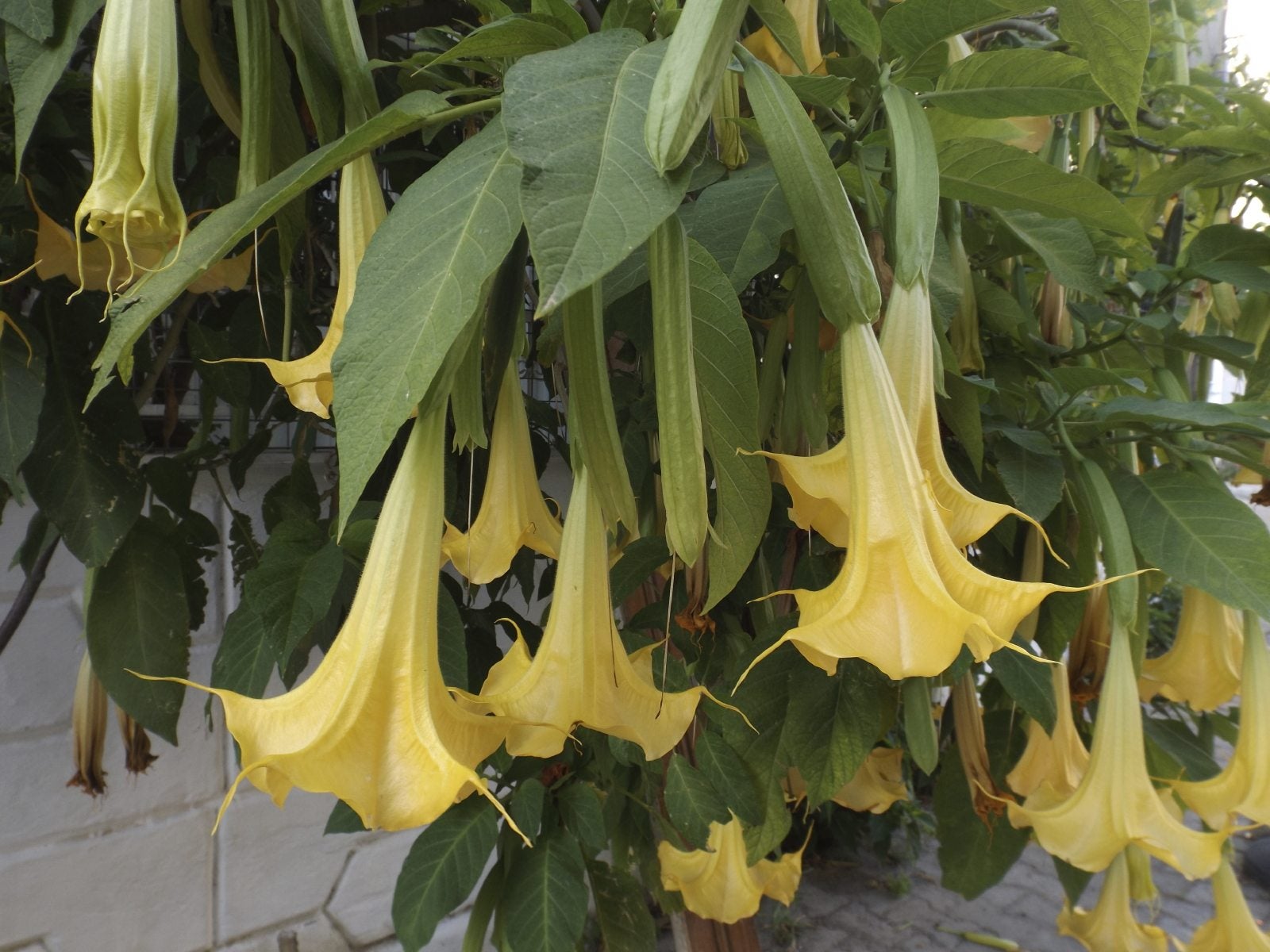 Brugmansia Problems: How To Treat Disease And Pests Of Brugmansia
Brugmansia Problems: How To Treat Disease And Pests Of BrugmansiaAlso known as angel trumpet or simply "brug," brugmansia is a shrubby plant with masses of impressive, trumpet-shaped flowers. While little care is required, pests and diseases may compromise the health and longevity of the plant. Learn more here.
By Mary H. Dyer
-
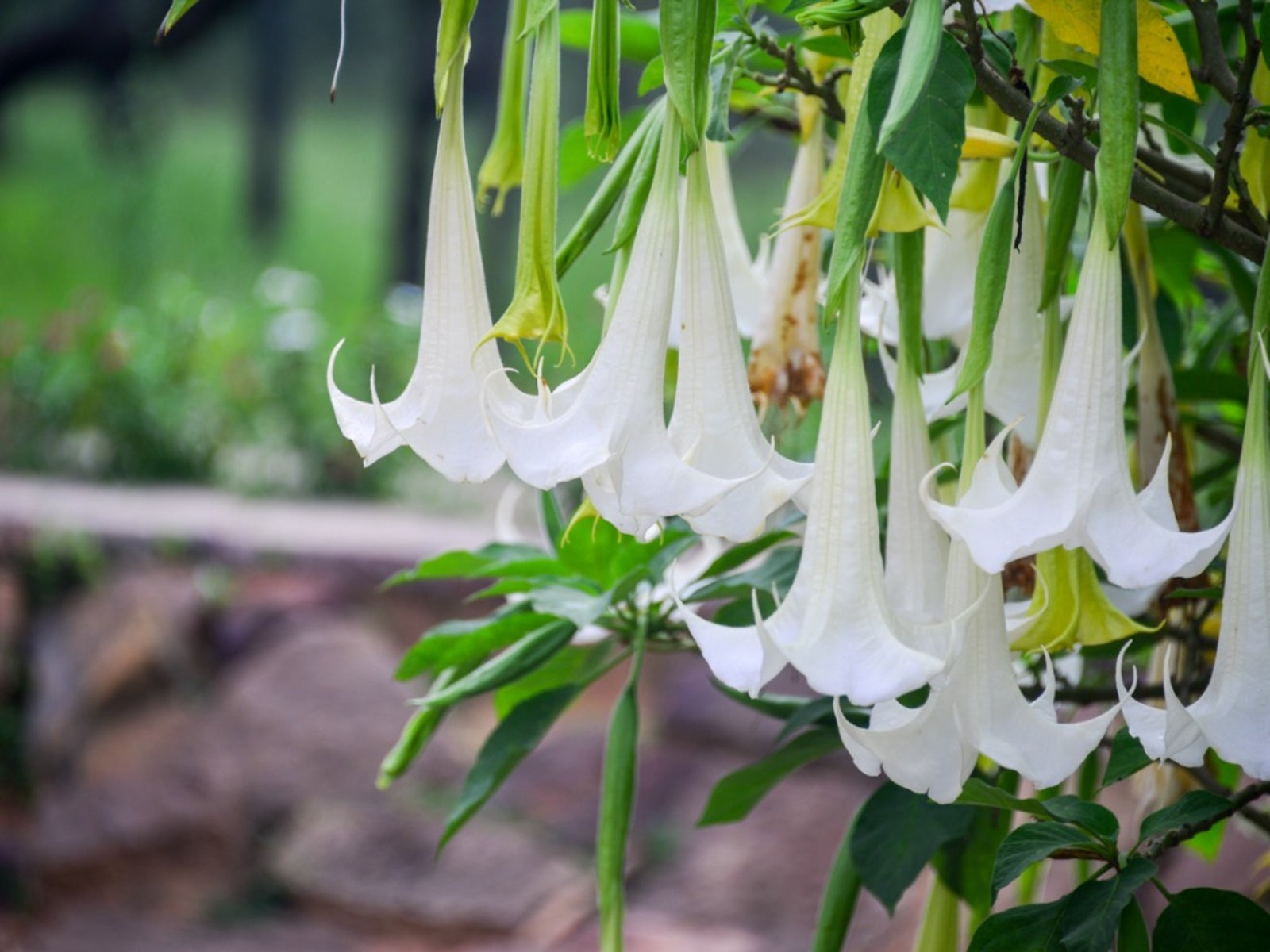 Feeding Angels Trumpet: When And How To Fertilize Brugmansias
Feeding Angels Trumpet: When And How To Fertilize BrugmansiasIf there ever was a flower you just had to grow, brugmansia is it. The plant produces a season long display of trumpet-shaped blooms. Knowing how to fertilize brugmansias will enhance and extend these brilliantly colored flowers. Click here to learn more.
By Bonnie L. Grant
-
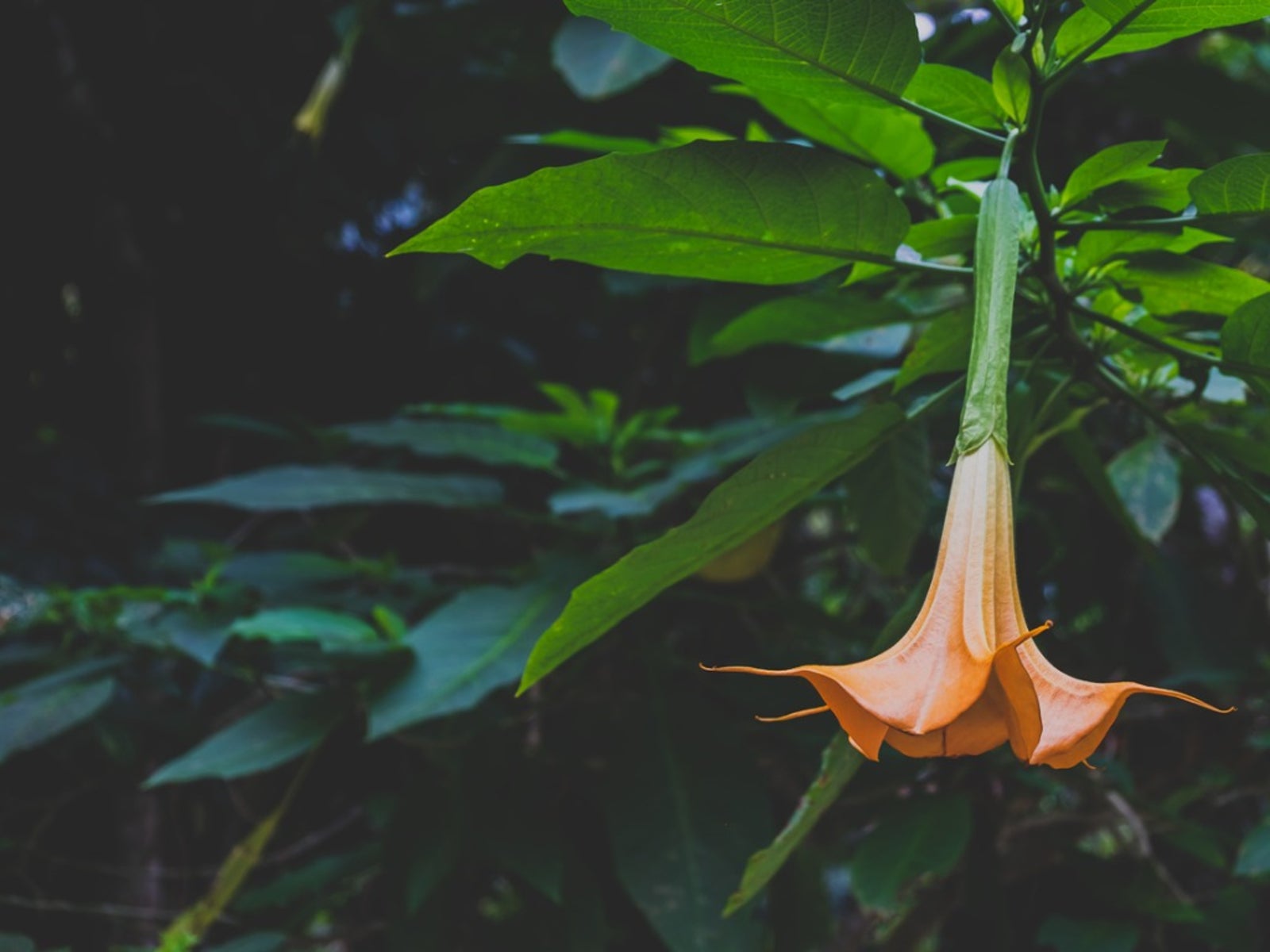 Learn How To Prune Brugmansia Trees
Learn How To Prune Brugmansia TreesBrugmansia plants make attractive specimen plantings. But, in order to keep them looking their best, trimming brugmansia may be necessary. Knowing how to prune brugmansia is important, and this article will help.
By Nikki Tilley
-
 Brugmansia Winter Care - Wintering Brugmansia In Your Home
Brugmansia Winter Care - Wintering Brugmansia In Your HomeWhile most types of brugmansia can thrive outdoors in warm climates, they need to be protected from freezing temps when growing brugmansia in cold climates. Follow the tips here for over-wintering brugmansia.
By Nikki Tilley
-
 Tips For Propagating Brugmansia
Tips For Propagating BrugmansiaBrugmansia is not only easy to grow but propagating brugmansia is easy too. There are three methods of brugmansia propagation - by seeds, cuttings, and air layering. Find the method that works best for you here.
By Nikki Tilley